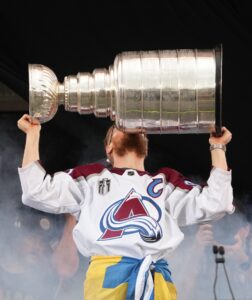Jan. 13: McLaughlin cleared waivers, per Elliotte Friedman of Sportsnet. Expect him to head to Providence at some point on Monday.
Jan. 12: The Boston Bruins have placed forward Marc McLaughlin on waivers, per PuckPedia. He’ll be assigned to AHL Providence if he clears.
The Bruins successfully waived McLaughlin ahead of the start of the season. He began the year in the minors but earned a quick call-up after posting 10 points in 15 AHL games to start the season.
McLaughlin bounced between the NHL and AHL lineups through late November, ultimately earning a full-time role with the Bruins before December. He’s since rotated into Boston’s fourth line, appearing in 12 games and scoring two goals.
McLaughlin has sat atop Boston’s call-up sheet since he joined the team as an undrafted college free agent at the end of Boston College’s 2021-22 campaign. He immediately stepped into the NHL, appearing in 11 games and scoring his first career goal before the season ended.
McLaughlin spent the next two years primarily in the minor leagues, combining for 44 points in 134 AHL games and adding one goal in three NHL spot starts. He was a healthy scratch in every game since the calendar turned over but earned a spot start on Saturday with Mark Kastelic out with an undisclosed injury.
In the overtime win, McLaughlin recorded four hits and two blocked shots in just five minutes of ice time. The Bruins will now attempt to pass him through waivers and reassign him to the minors less than a day later.
Teams will have until 1 p.m. CT on Monday to claim McLaughlin, though his role of menial fourth-liner makes a change of scenery hard to envision.

